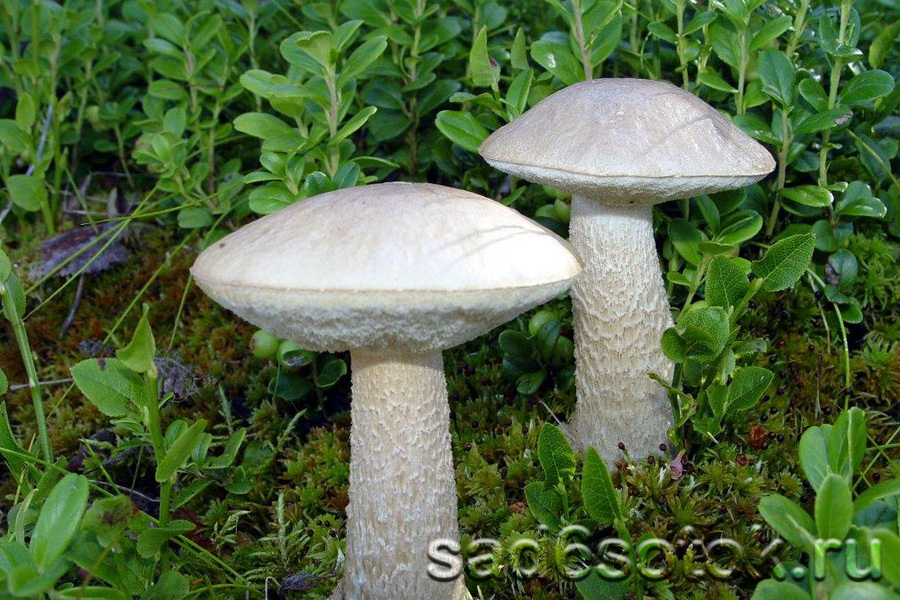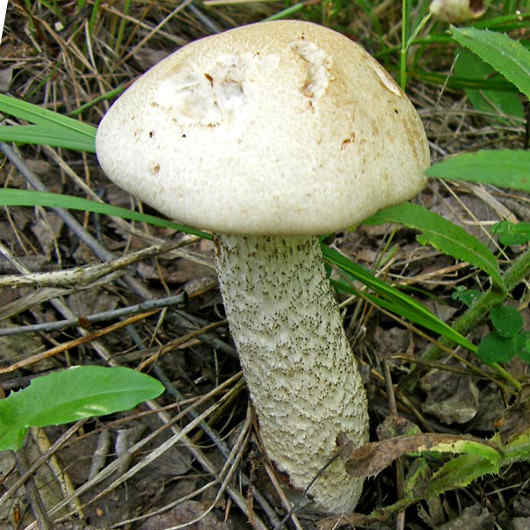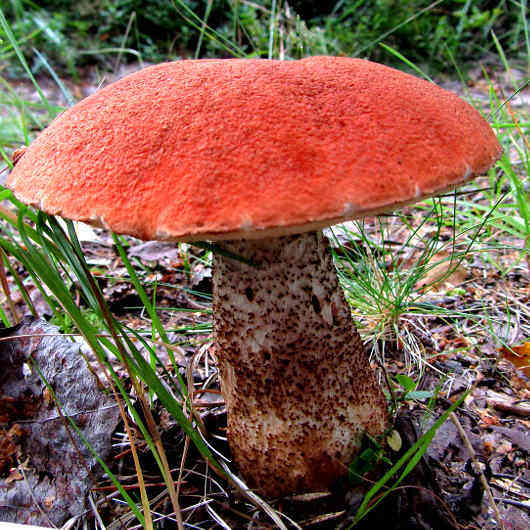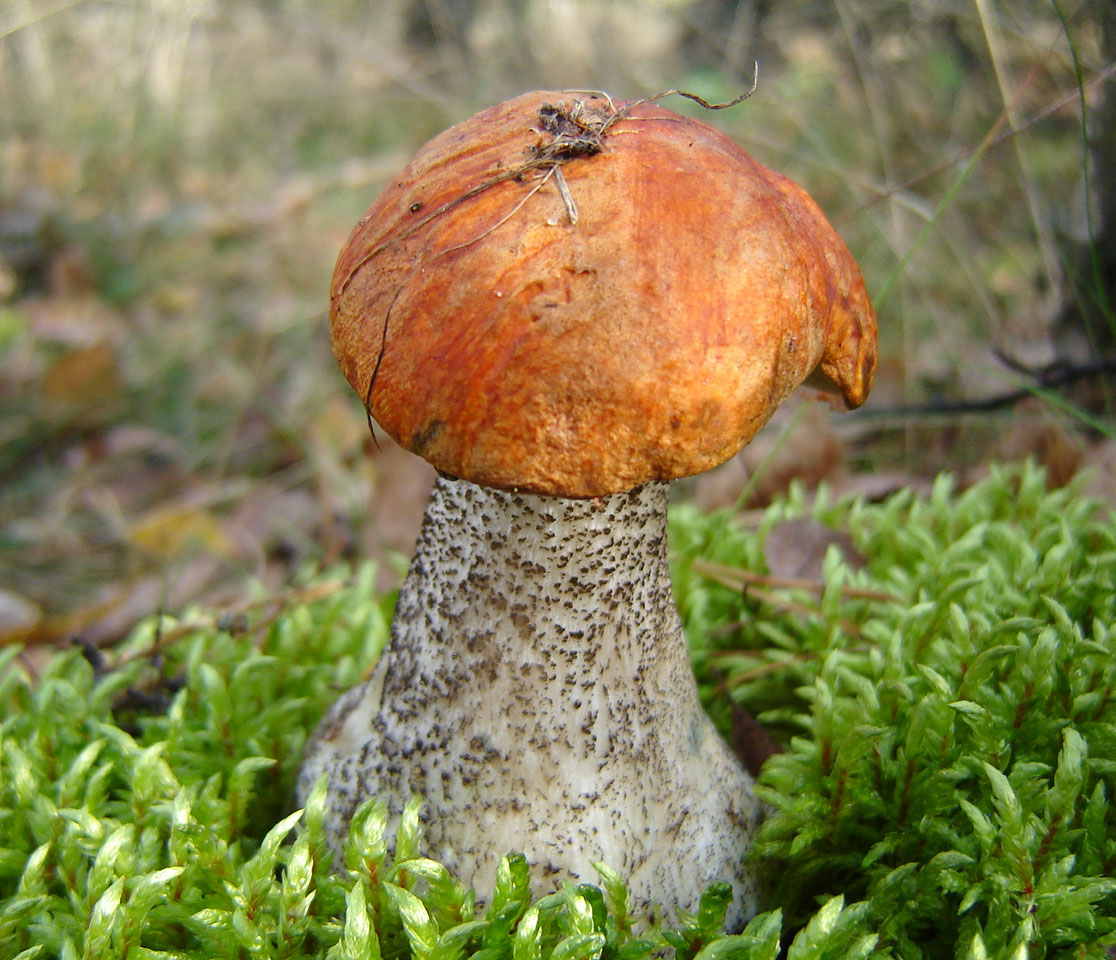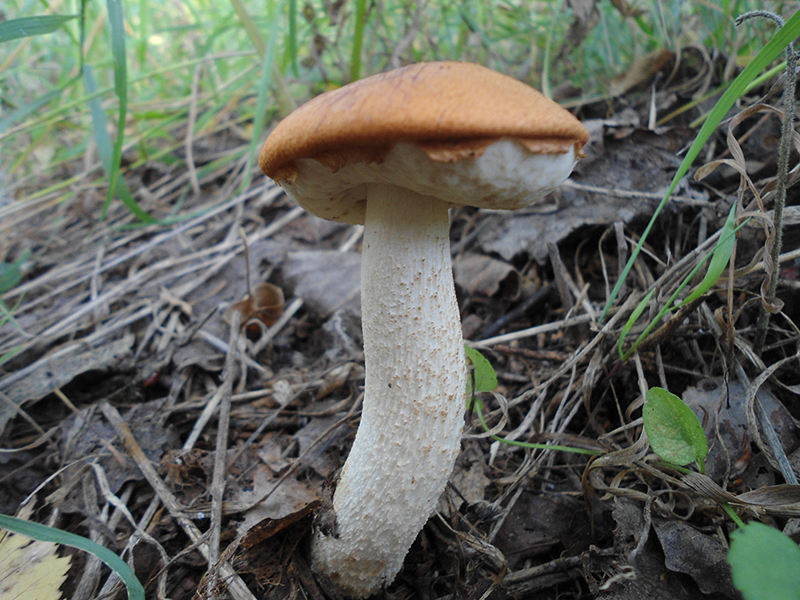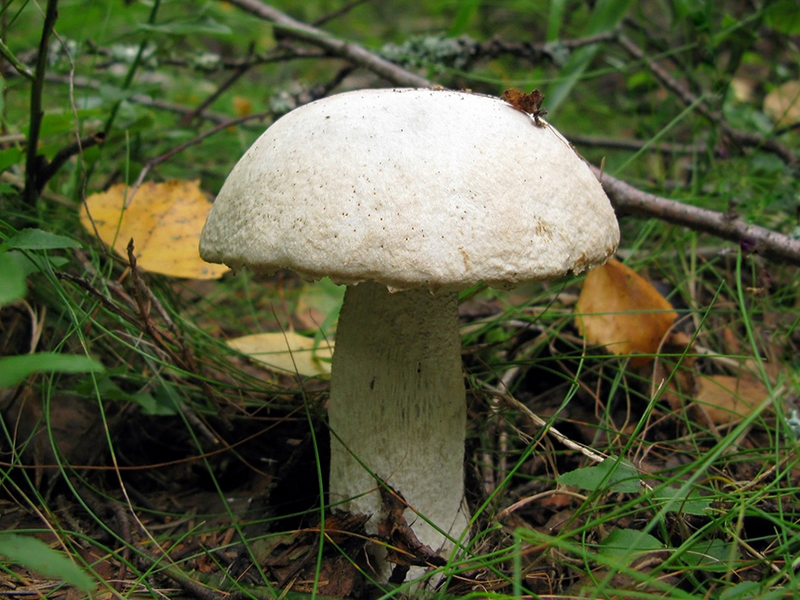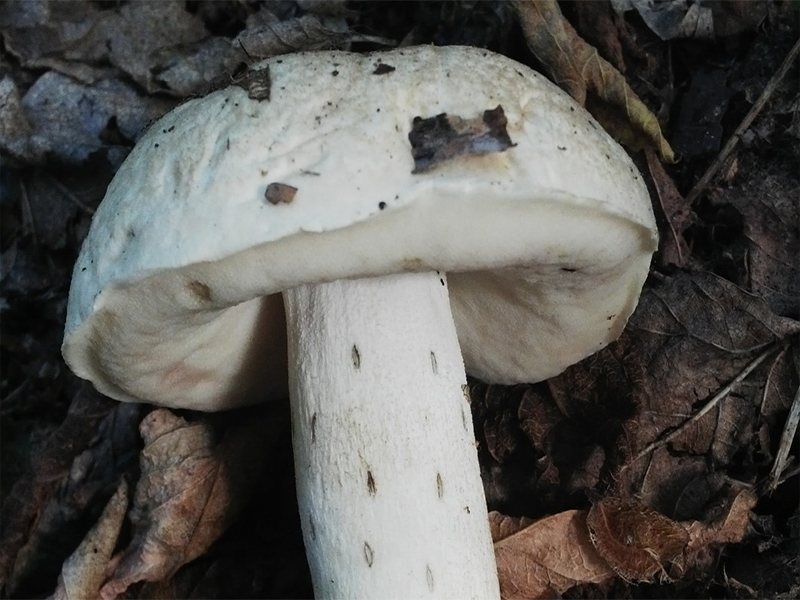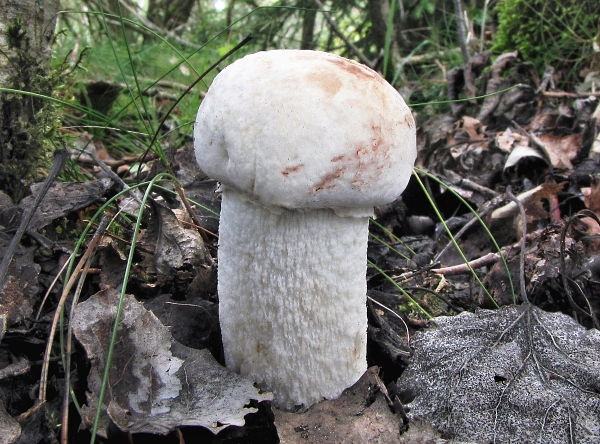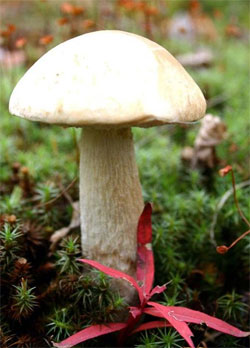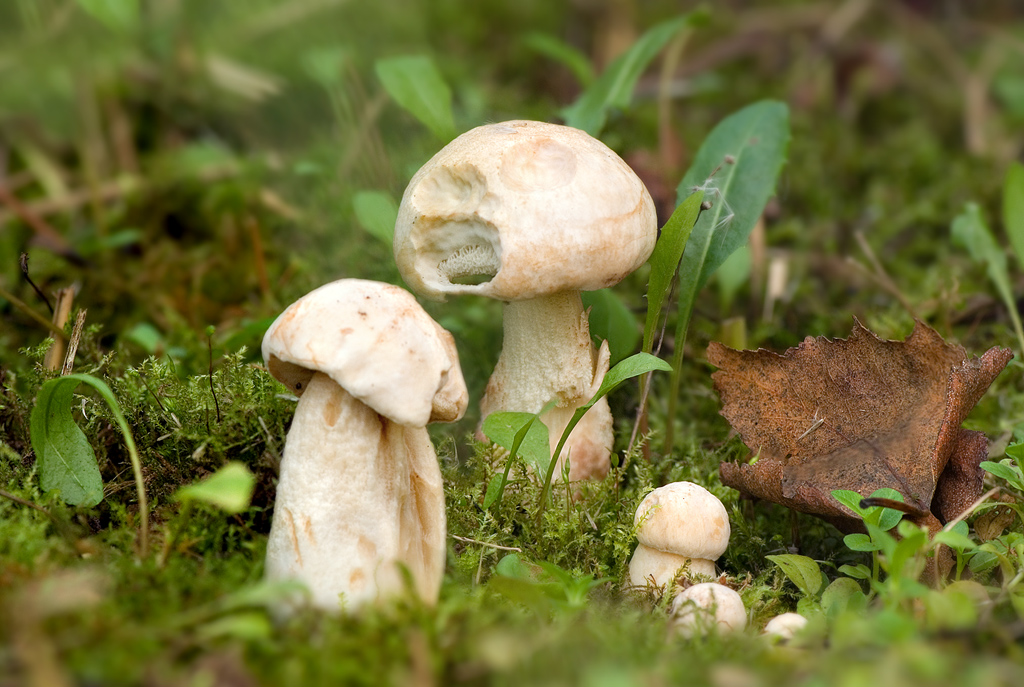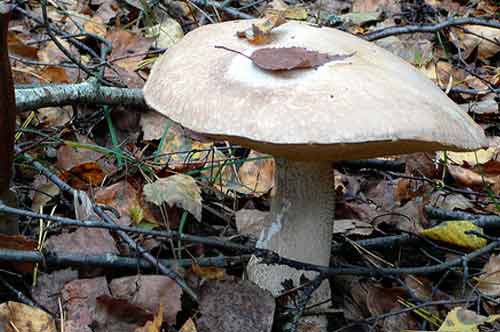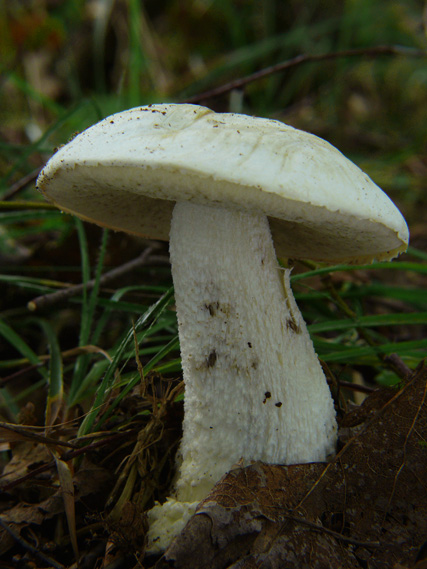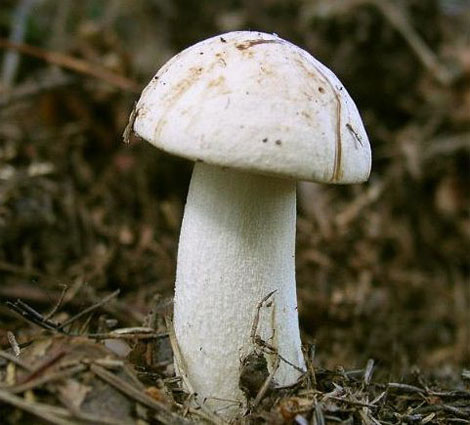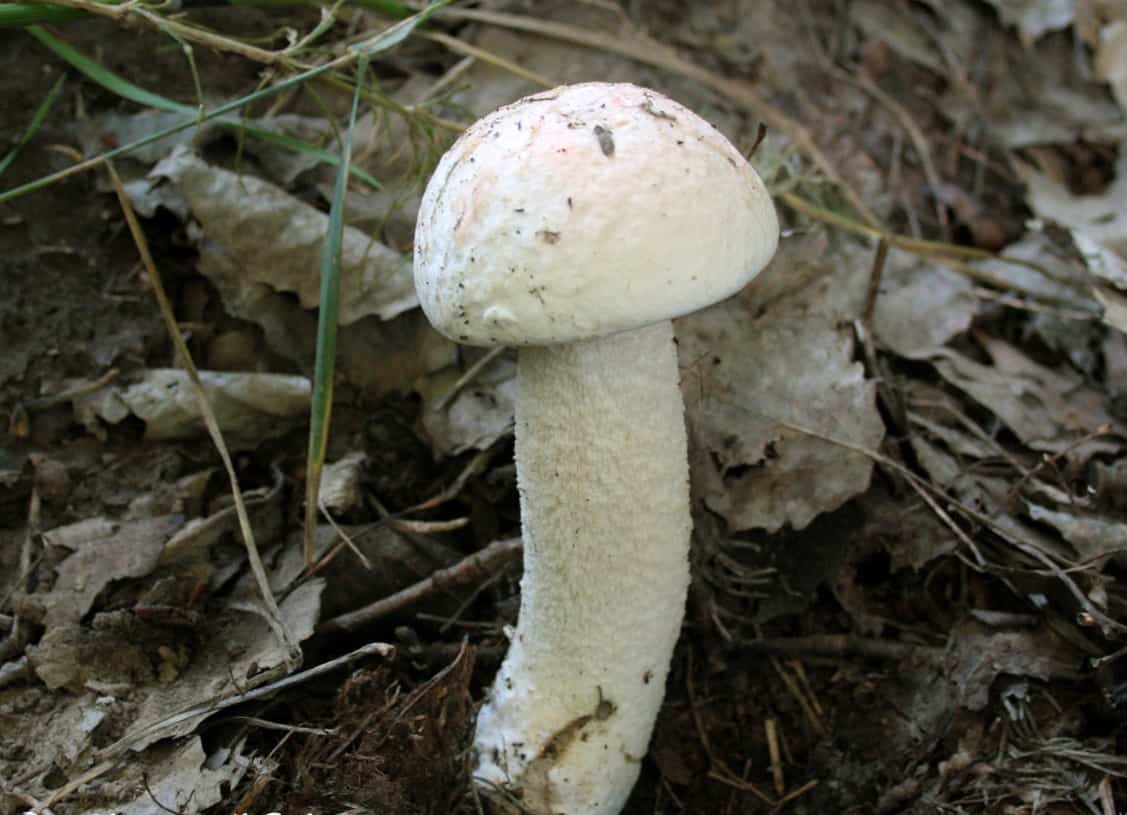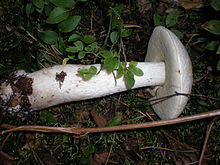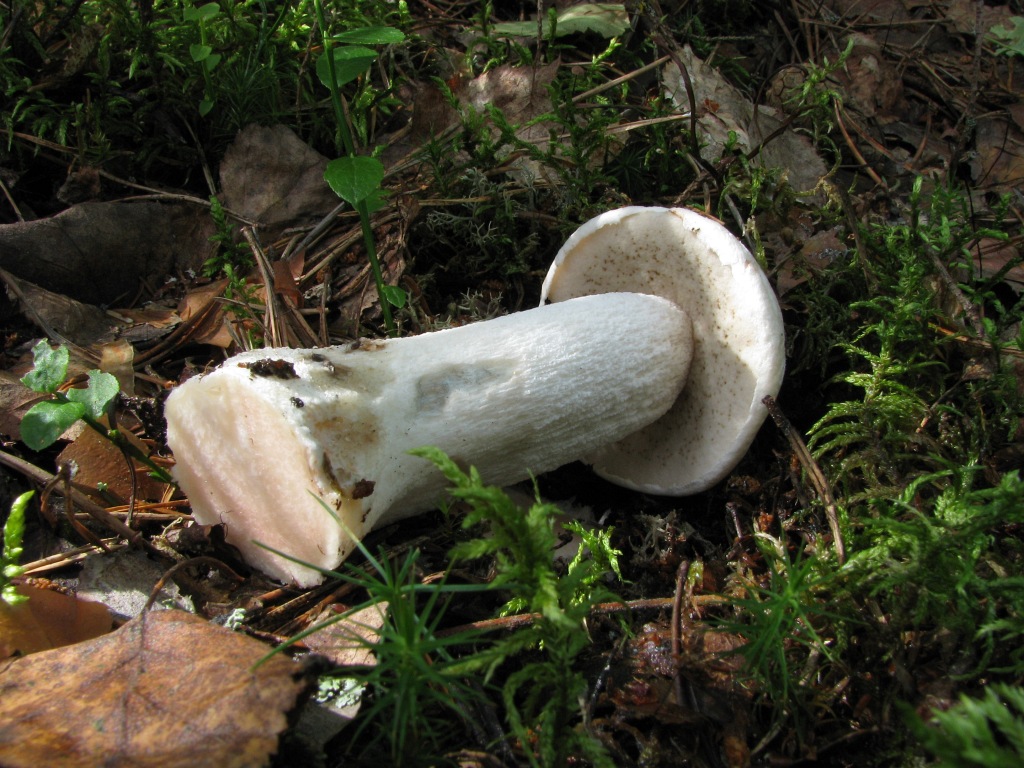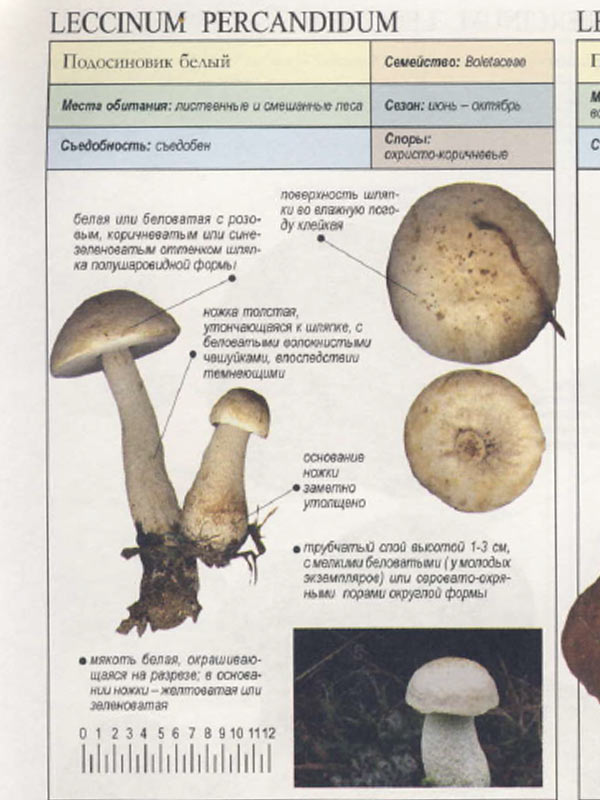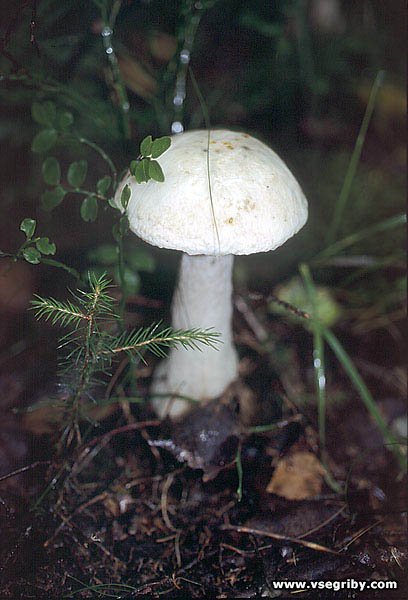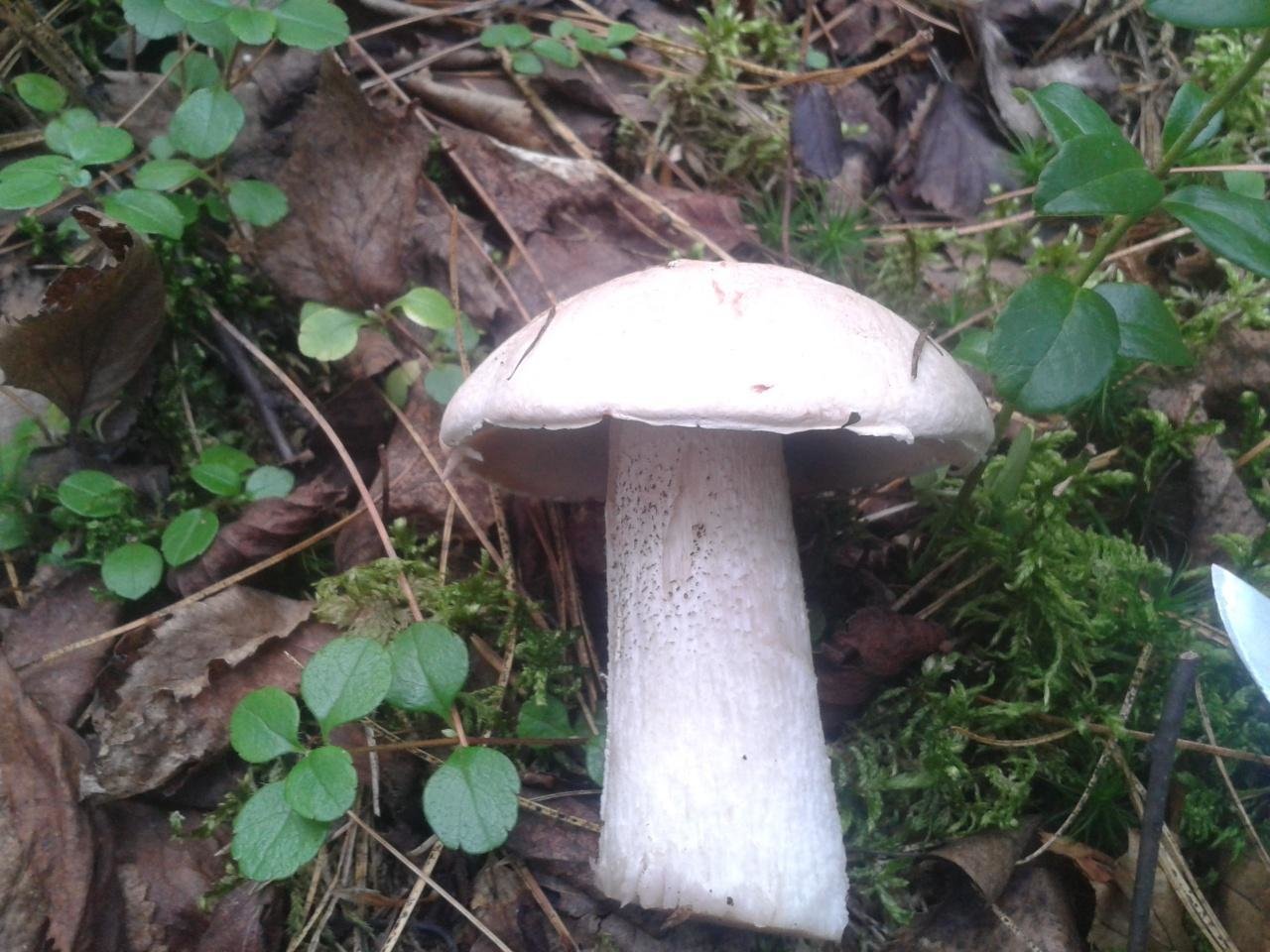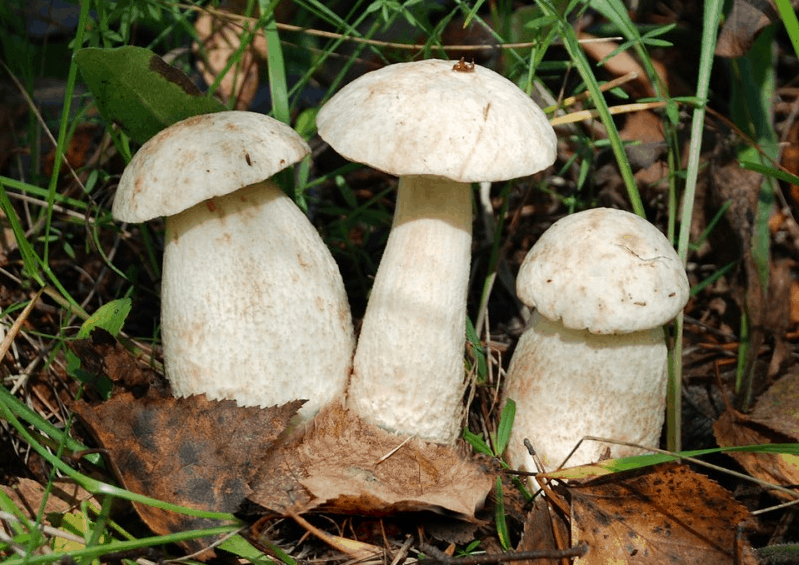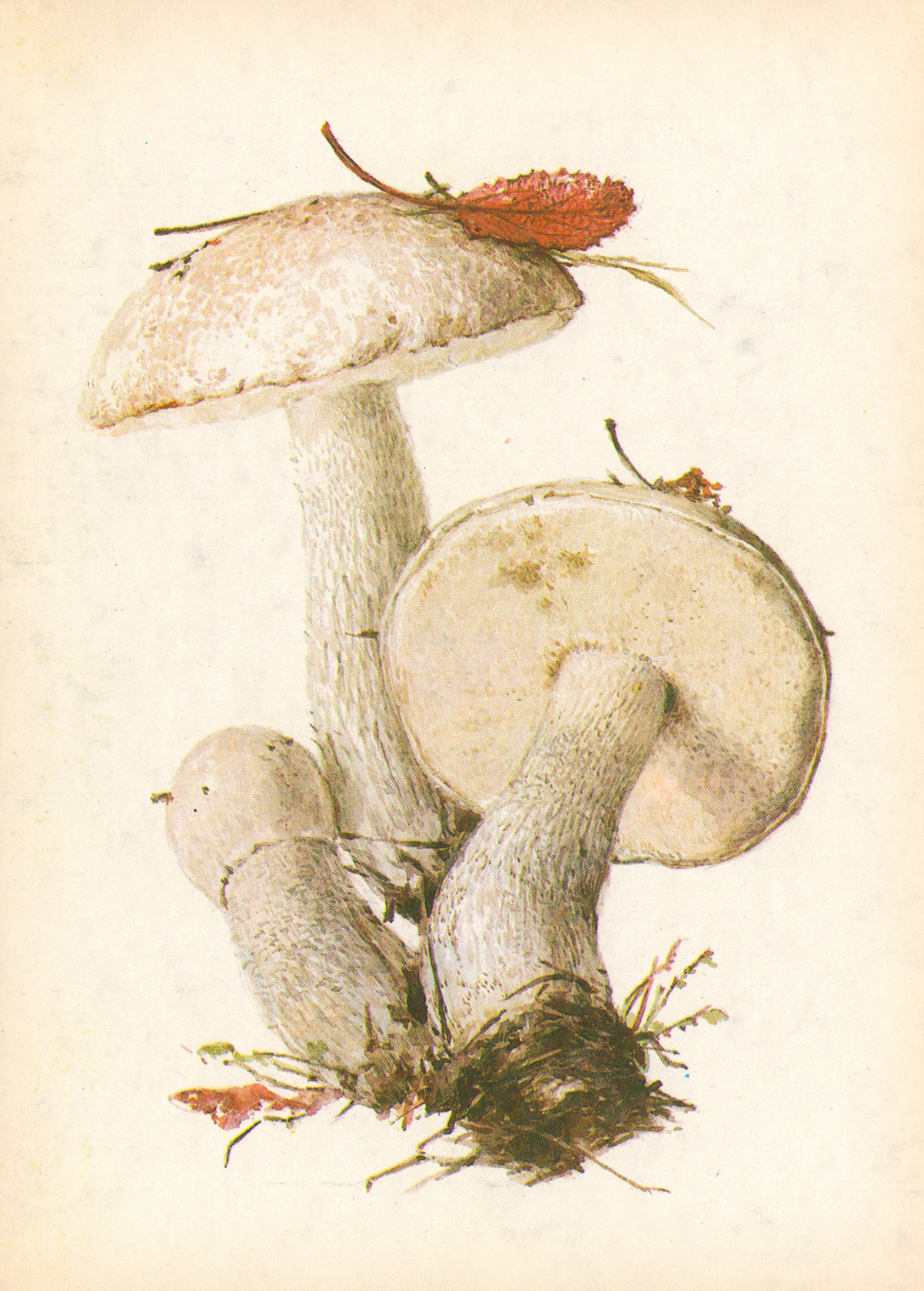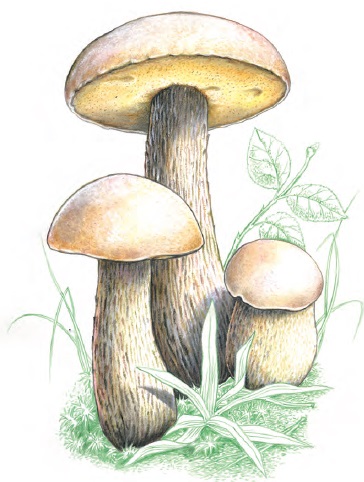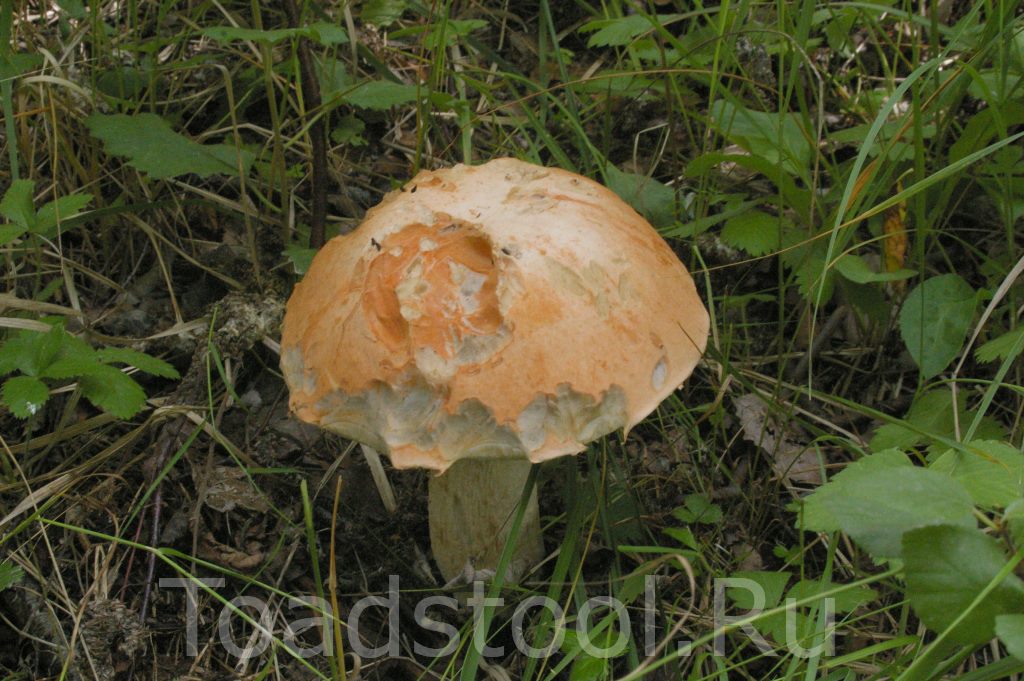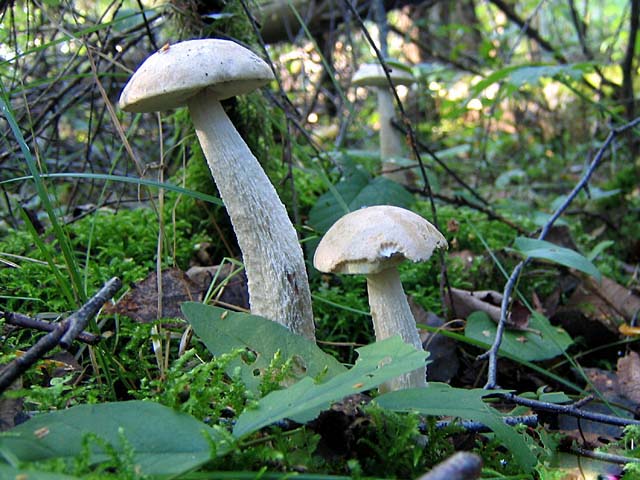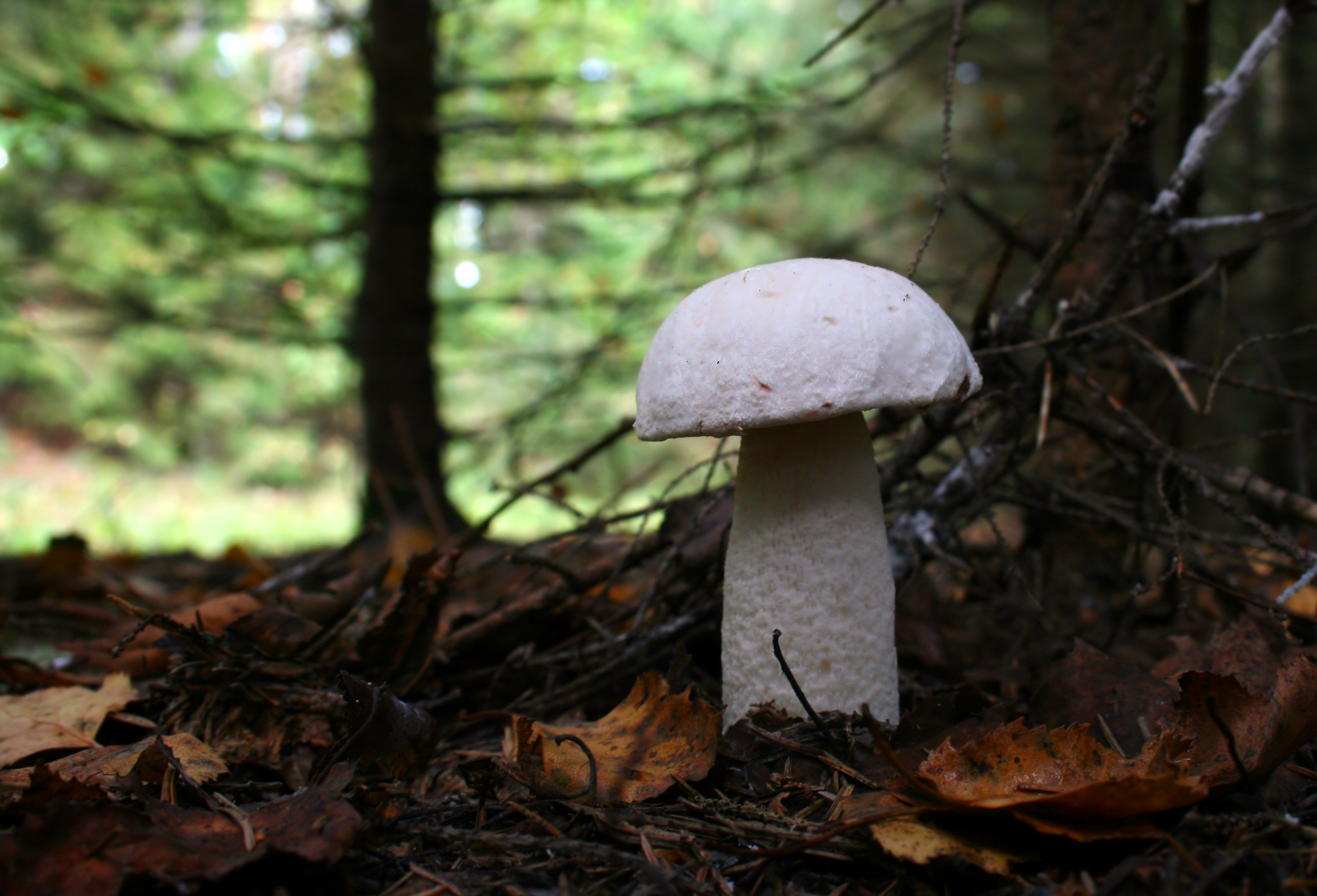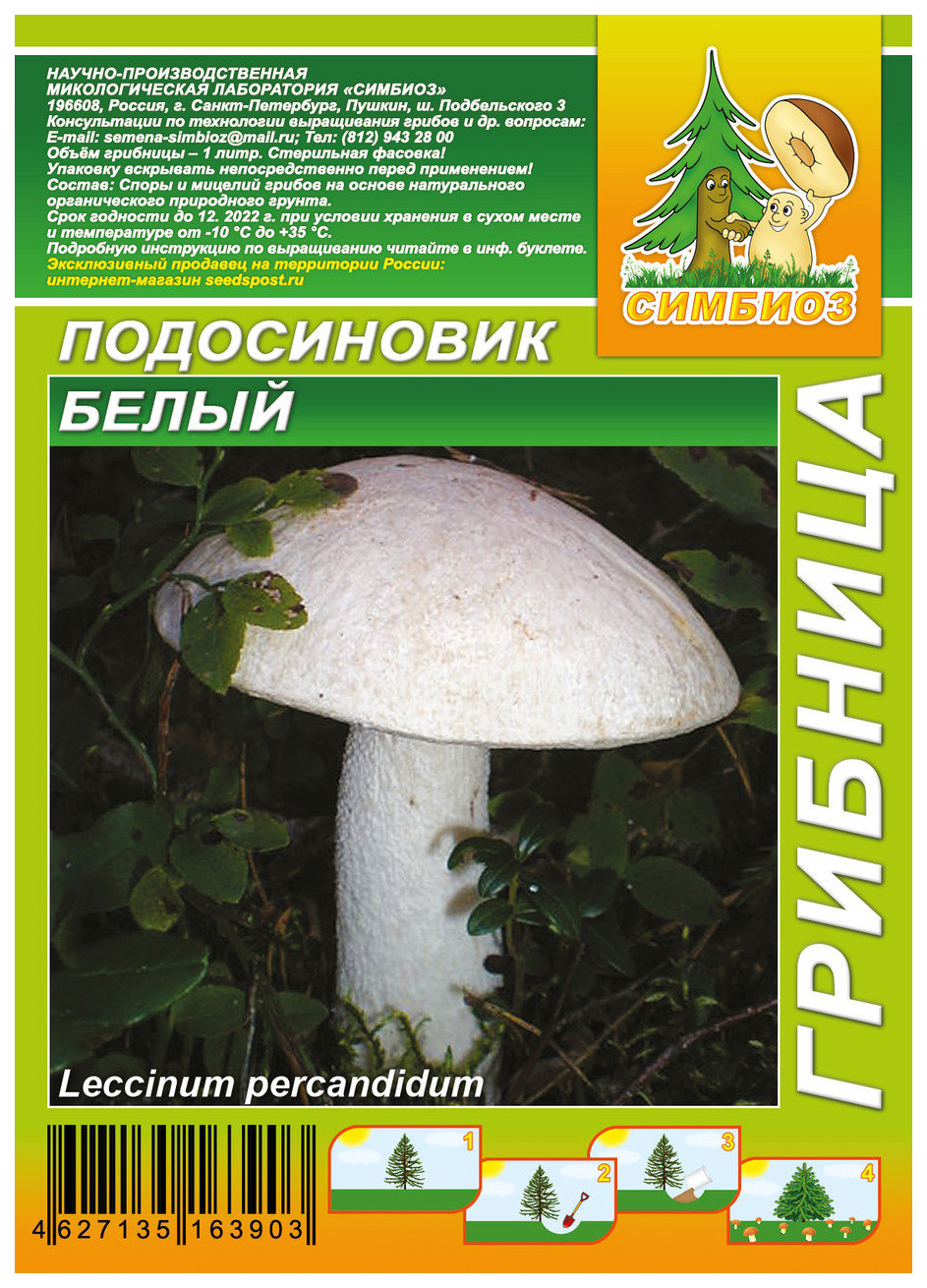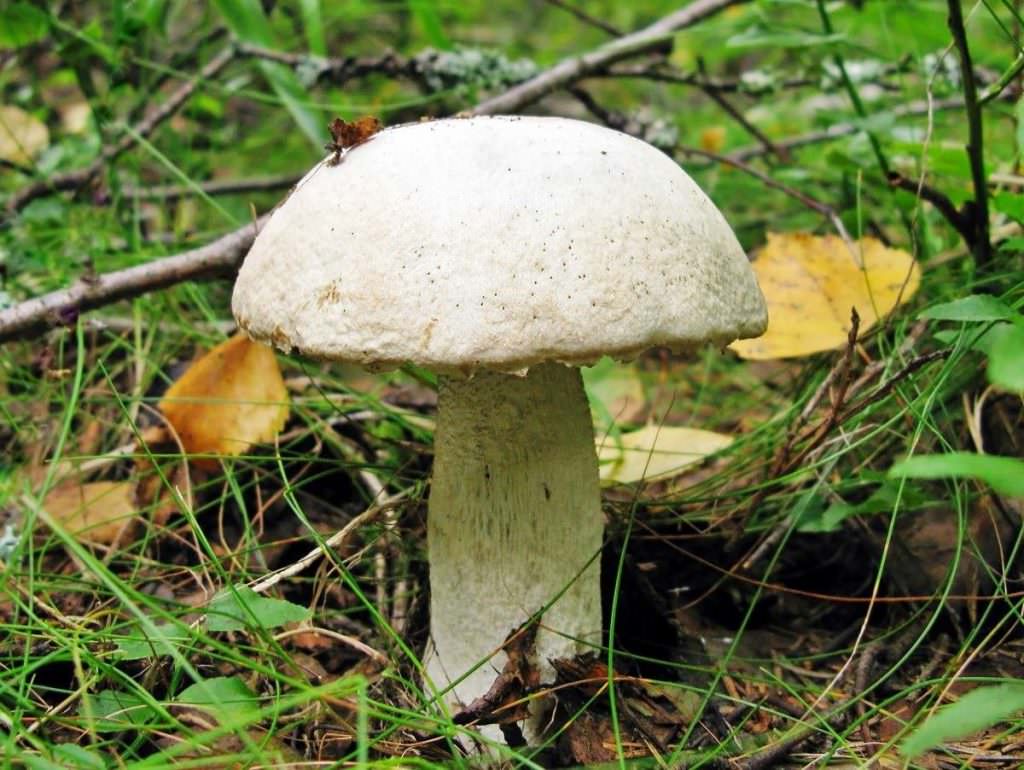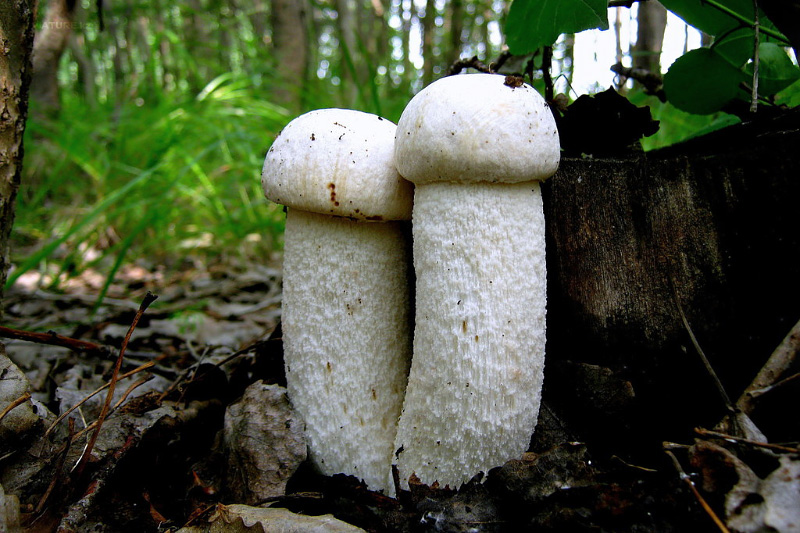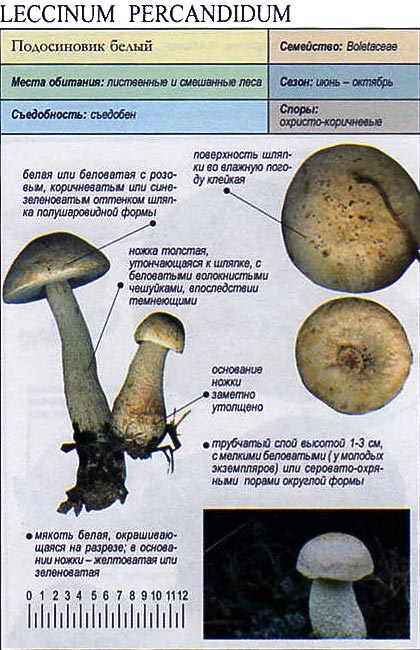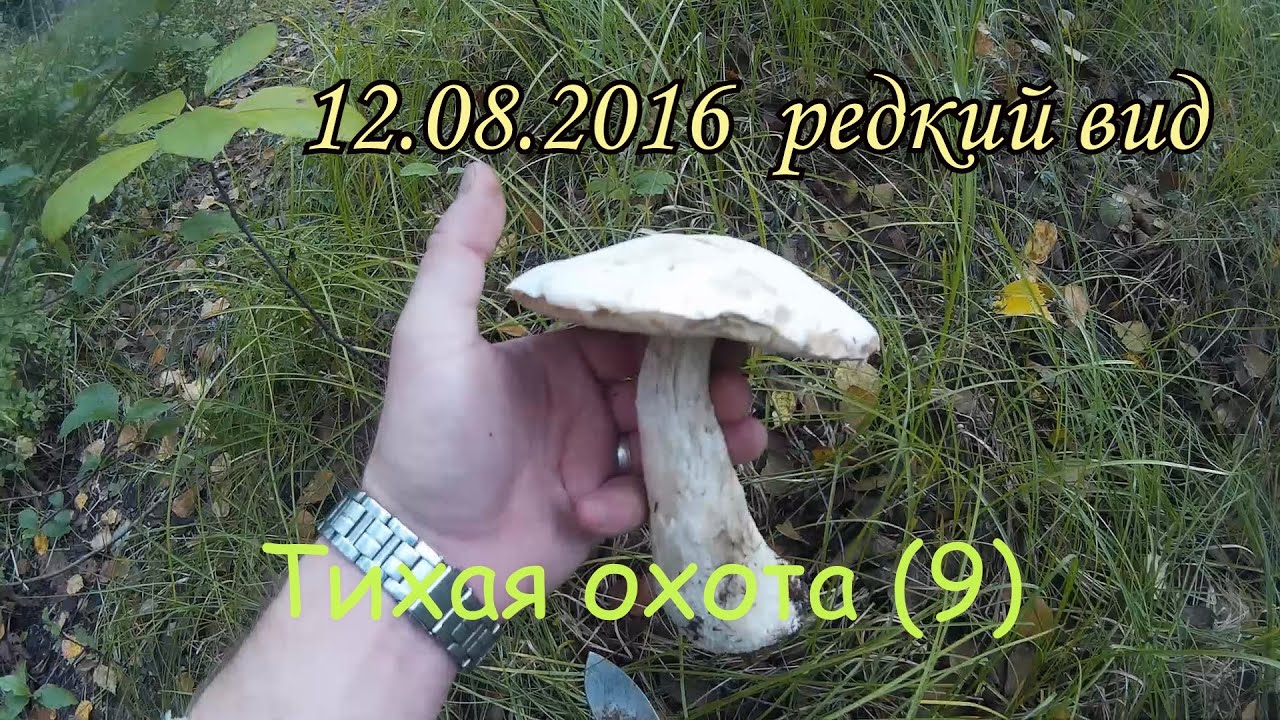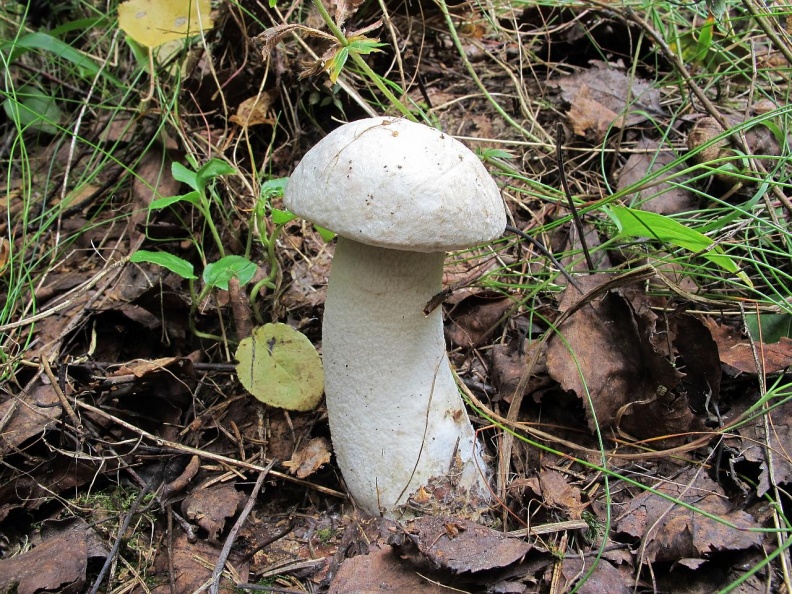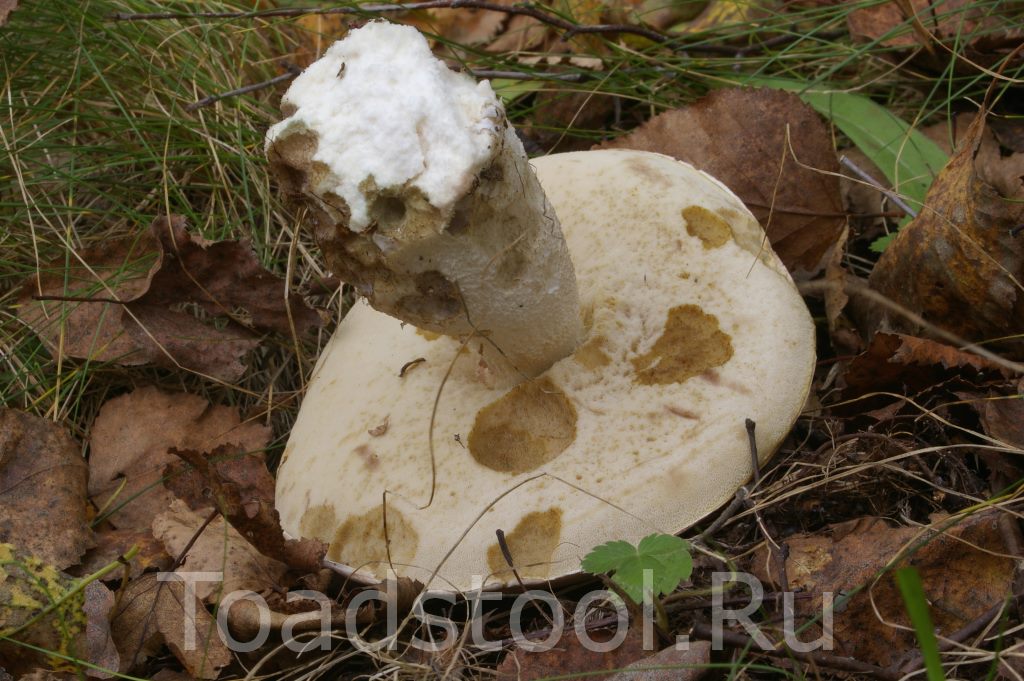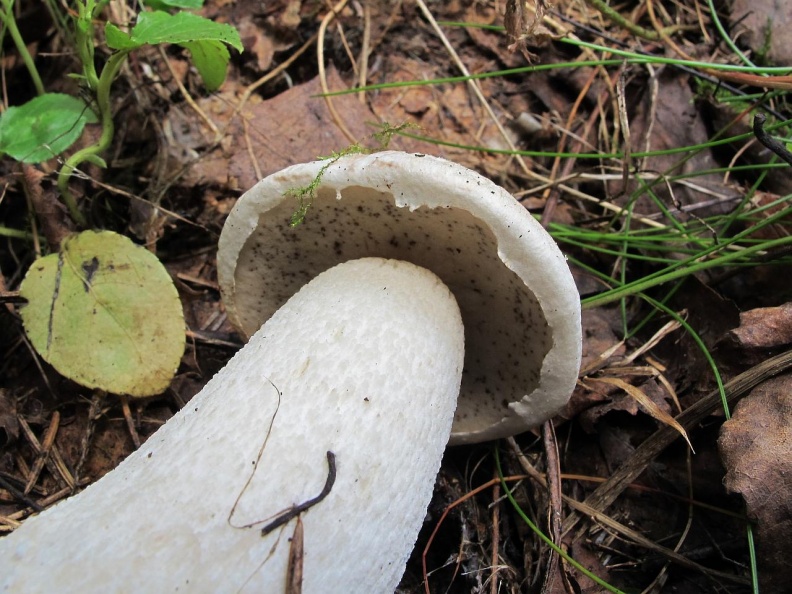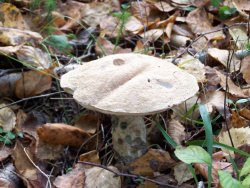Growing methods
White boletus can be grown in any summer cottage. For this, certain methods are used:
- Growing with spores: for this, caps of overripe mushrooms are prepared. They are poured with water and infused for a couple of hours. The resulting liquid is poured over the area prepared for planting.
- Planting with crushed parts of fruit bodies: young mushrooms are well crushed and buried in the soil near the trees on the site.
- Using ready-made mycelium: it is sold in gardening stores, there are several options. They are planted and looked after according to the instructions attached to the packaged mycelium.
Boletus species
Most types of boletus are edible and tasty, but there are also false boletus. But to make mushroom hunting more interesting, study the differences and individual properties of their varieties.
Boletus red
This edible mushroom is distinguished by the fact that it does not choose a certain type of tree as a mycorrhizal partner, but is "friends" with a variety of deciduous giants: oak, beech, poplar, aspen, birch, willow. Red boletus can be described as follows:
- The diameter of the cap ranges from 4 to 15 cm, in some cases it reaches 30 cm.
- The height of the leg can be up to 15 cm, its thickness is from 1.5 to 5 cm.
- The color of the cap is bright red, red-brown, red. The skin is firmly attached to the pulp, smooth or slightly velvety to the touch.
- The outer layer of the leg is covered with gray-white scales, which, as the mushroom matures, acquire a brown tint.
If you cut the red boletus, at this point the color will change first to blue, then black. A group or a single mushroom can be found in deciduous or mixed forests. He especially loves young growth of aspen, various ditches and forest paths. The red boletus grows throughout the Eurasian territory, in the tundra it chooses places under dwarf birches. In our vast homeland, it can be seen everywhere - from the European part to the Far East, including the Caucasus. You can harvest the red boletus during the harvest season: from June to October.
Boletus yellow-brown
It is an edible mushroom that is in symbiosis with birches. Low-lying forest belts with a predominance of aspen and birch are chosen as a place of growth; they can be found in spruce-birch forests, pine forests. They grow in temperate areas. Description:
- The diameter of the cap is from 5 to 15 cm, sometimes 25 cm.
- The leg is high, reaching 8-22 cm, its thickness is about 2-4 cm.
- The hat is sandy-orange or yellowish-brown.
- In young mushrooms, the dry skin of the cap often hangs over the edge.
- The leg has a white or grayish tint, covered with granular brown scales, blackening as it grows.
Usually grows singly. If the leg is cut off, at this point it will turn pink, then blue, after which it will acquire a purple hue, sometimes green. This type of mushroom is collected all summer long. But sometimes they are met at the end of November.
Pine redhead
Belongs to edible mushrooms. He has a reddish-brown hat with a dark crimson shade, which distinguishes him from his fellows. Grows near pine and bearberry. Description:
- The diameter of a dry velvety cap reaches 15 cm.
- The length of the leg grows up to 15 cm, its thickness reaches 5 cm. Small, brownish scales are located on the leg of the redhead.
At the cut site, the flesh turns blue, then turns black. This species is less common than the red boletus. Grows in humid coniferous forests in the temperate latitudes of Europe.
Spruce redhead
It is an edible mushroom. It can be described as follows.
- The hat has a deep brown-chestnut color, hangs slightly from the edge, its diameter is from 3 to 10 cm.
- The leg in the form of a cylinder has light brown scales on the surface, slightly expanding towards the base.The length reaches 8-14 cm, the thickness is 1.5-3 cm.
The flesh of the redhead is dense, white, it becomes dark on the cut. Spruce boletus are grouped in coniferous forests, as a rule, under spruce trees, they are found in oak forests, mixed forests. The harvest season begins in July and lasts until October.
Black-scale boletus
This edible mushroom has a reddish orange, dark reddish or brick red cap. In a young mushroom, it is semicircular, dry, slightly velvety. Over time, it acquires a cushion shape, becomes smooth, reaches from 4 to 12 cm in diameter. Reddish scales are located on a 13-18 cm high leg. The flesh is firm, white; when cut, it turns purple or gray-black.
So, we learned that the boletus mushroom is edible. It owes its name to aspen, since it is closely connected with its roots, and the hat resembles an autumn leaf in color. And each species has its own characteristics and differences from others.
What inedible mushroom can be confused with boletus
The boletus is very unique in its appearance, and therefore it is quite difficult to confuse it with other mushrooms. But inexperienced mushroom pickers may still have some difficulties with its definition. In nature, there is perhaps only one inedible mushroom that bears some resemblance to the boletus, and it is called the bile mushroom (Tylopilus felleus).
The gall fungus is not poisonous, it is simply inedible due to the very bitter taste of the pulp. Among the main differences between this mushroom and the boletus is a brown cap, a tubular layer that has a pinkish tint in adult mushrooms, as well as a leg on which there are no scales, but often there is a mesh pattern. On the cut, the mushroom does not darken, only occasionally a reddish tint may appear in the pulp. The gall fungus is quite widespread in Russia, it grows in coniferous and deciduous forests, and likes to appear at the base of trees. Most often, the gall mushroom is confused with a boletus or a porcini mushroom, but it does not have a very big resemblance to a boletus, you can see for yourself by looking at his photo.
Edible mushroom very similar to boletus
The genus Leccinum includes a considerable number of mushrooms, among which there are not only boletus, but also boletus. It is one of the species of boletus, and specifically the harsh boletus (Leccinum duriusculum) in many ways is very similar to the boletus. This mushroom forms mycorrhiza with aspens and poplars, has a dense pulp structure, which darkens on the cut, sometimes there are bluish spots at the base of the leg, and in general its appearance resembles a typical boletus.
Have you noticed how much these mushrooms have in common? Well, now it's worth mentioning the differences. The first thing that catches your eye is the hat, in the harsh boletus it is gray-brown or brown, only spruce or oak aspen boletus can have similar colors. On a cut, the flesh of a boletus does not darken immediately, initially it acquires a reddish tint and only later becomes almost black. The harsh boletus is rarely wormy. This is associated primarily with its dense pulp. He has the greatest resemblance to the boletus at a young age, when his hat has not yet opened. In terms of nutritional value, this boletus is not inferior to boletus.
Where do white aspen trees grow?
White aspen mushrooms are found in the temperate climatic zone. They are collected in coniferous, deciduous and mixed forests. Fruiting bodies form mycosis with birch, aspen, spruce, fir. They occur in areas with high humidity. These include places near water bodies and streams, ravines, lowlands. The white variety grows in soil, on stumps, in dead wood.
Attention! In many regions, white aspen is included in the Red Book. The species is considered rare and endangered in the Tula Region and Krasnodar Territory.
The rarity of the white boletus is associated with anthropogenic factors. As a result of human activity, the habitat of fungi changes. First of all, the disappearance of boletus is due to deforestation.
White boletus grows in the North-West region, Moscow region, the Republic of Chuvashia, Mari El, Komi. In Siberia, it is collected near Lake Baikal and in more northern regions. In Europe, it is found on the territory of Belarus, Latvia, Estonia. It is also found in the forests of North America.
The white variety grows singly, sometimes forming small groups. In dry summers, fruiting bodies appear in damp places, where moisture constantly accumulates. When picking mushrooms, they check glades, areas near forest roads and paths.
Fruiting lasts from June to mid-autumn. Usually there are 3 growth waves. The first fruiting bodies appear at the end of June. During this period, single copies appear. The second wave is more plentiful, with its peak in the middle of summer. Individual mushrooms can be harvested in September and October, when the third layer passes.
Boletus mushroom: other features
Despite the relative "nobility" of aspen boletus, it is impossible to neglect safety measures when collecting them. Compared to the same oil, these mushrooms absorb harmful substances much less. But they, like white ones, can also accumulate radionuclides (cesium, etc.) and become toxic. And in radioactively hazardous areas, it is better to abandon the "quiet hunt" for any mushrooms altogether. In addition, to prevent poisoning (especially when harvesting for future use), boletus should be boiled in salt water with vinegar several times (2 - 3) for 30 minutes before cooking, changing the water each time.
{SOURCE}
Yellow-brown boletus (Leccinum versipelle)
Sininima:
- Obschinous
- Boletus red-brown
Hat:
The diameter of the cap of a yellow-brown boletus is 10-20 cm (sometimes up to 30!). The color varies from yellowish-gray to bright red, the shape is initially spherical, not wider than the leg (the so-called "brisket"; it looks, you know, quite feidist), later convex, occasionally flat, dry, fleshy. At the break, it first turns purple, then becomes bluish-black. It has no special smell and taste.
Spore-bearing layer:
The color is from white to grayish, the pores are small. Young mushrooms are often dark gray, lightening with age. The tubular layer is easily detached from the cap.
Spore powder:
Yellow-brown.
Leg:
Up to 20 cm long, up to 5 cm in diameter, solid, cylindrical, thickened towards the bottom, white, sometimes greenish at the base, deeply sinking into the ground, covered with longitudinal fibrous scales of gray-black color.
Spreading:
Boletus yellow-brown grows from June to October in deciduous and mixed forests, forming mycorrhiza mainly with birch. In young forests, it can be found in fabulous quantities, especially in early September.
Similar species:
As for the number of varieties of boletus (more precisely, the number of species of mushrooms, united under the Russian name "boletus"), there is no final clarity. The red boletus (Leccinum aurantiacum), which is allied to aspen, is especially distinguished, which is distinguished by red-brown scales on the stem, not such a wide hat span and a much more solid constitution, while the yellow-brown boletus in texture is more reminiscent of the boletus (Leccinum scabrum). Other species are also mentioned, distinguishing them mainly by the type of trees with which this fungus forms mycorrhiza, but here, obviously, we are talking about individual subspecies of Leccinum aurantiacum.
Edibility:
Excellent edible mushroom. Slightly inferior to white.
Remarks
We all love the boletus. The boletus is beautiful. Even if he does not have such a powerful "inner beauty" as the white one (although he still has some) - a bright appearance and impressive dimensions can please anyone.For many mushroom pickers, the memories of the first mushroom are associated with the boletus - the first real mushroom, not about the fly agaric and not about the russula. I remember very well how in 1983 we went to pick mushrooms - at random, not knowing the place and the road - and after several unsuccessful forays we stopped near a modest young fishing line at the edge of the field. And there!..
I think you have already guessed what we saw there. What and how much ... And that I had to drag the spare tire from the trunk into the salon, because there was no room, you guessed it too ... And that the car was so overloaded that it scratched the asphalt with its belly, I will not lie. But there was simply an inexpressible mass of aspen mushrooms! Boletus and for some reason waves. In the proportion of "one boletus for two boletus". And there was a good bucket with a little
Moreover, please note that the waves are still small
Eh! .. And where are these times? Thanks to their naive flair, the boletus are the first to leave our forests. In marching order, folding the banners ...
Description of white boletus
The diameter of the cap ranges from 4 to 15 centimeters, especially large specimens can have a cap up to 25 centimeters in diameter. At first, the shape of the cap is hemispherical, but over time it changes to a cushion-shaped one.

The skin of the cap is whitish with a pink, blue-green or brown tint. As it grows, the color of the cap becomes yellowish.
The surface of the cap is felt, dry and bare. The leg is rather high, its shape is clavate, while the lower part is thickened. The color of the leg is white. The scales are fibrous, also white in color, but over time they become brownish or grayish.
The tubular layer of the fungus is yellowish or whitish, and in overripe specimens it becomes gray-brown or gray. The flesh is strong, white in color, and at the base of the leg it can be blue-green. When cut, the pulp instantly turns blue, then becomes black, and purple in the leg. Spore powder of ocher-brown color.

Growing places of white boletus
These mushrooms can be found in pine forests, which also contain other trees. In dry weather, white aspen mushrooms often grow in moist aspen forests. Other sources indicate that white aspen grow in aspen, birch and coniferous forests.
The harvesting season for white boletus is from June to September. Although boletus is a rare mushroom, sometimes it bears fruit in rather large groups.
These mushrooms grow in the Moscow, Leningrad, Murmansk and Penza regions, as well as in the Republic of Mari El, Siberia and on the coast of Lake Baikal. In addition, these mushrooms are harvested in Latvia, Estonia, Western Europe and Belarus. North America is also home to the white boletus.

Boletus white
Edible white boletus
As noted, boletus is an edible mushroom. It can be pickled, dried, fried, and eaten fresh. White boletus can be cooked along with other types of boletus.
Other members of the genus
The red boletus is a close relative of the white boletus. The cap of this mushroom in diameter can reach 5-15 centimeters, in youth it seems to be stretched over the leg, but as it grows it opens up. The flesh is white, firm, turning blue-black when broken. The tubular layer is white, but then it becomes gray-brown, uneven, thick. The spore powder is yellow-brown.
The length of the leg can reach 15 centimeters, and the width reaches 5 cm. The leg is solid, cylindrical, thickening downward. The color of the leg is white, greenish at the base. The knife goes deep into the ground, its surface is covered with gray or white scales. It is velvety to the touch.

Red boletus grows next to aspen trees. With these trees, they form mycorrhiza. Harvesting time is June-October. In places where mushroom pickers do not collect these mushrooms, they are found in huge numbers. Red boletuses are eminently edible mushrooms, tasty and aromatic.
The boletus is yellow-brown or black-skinned boletus has a cap diameter of 10 to 20 centimeters, but sometimes it can reach 30 centimeters. The color of the cap varies from gray-yellow to bright red. At first, the cap is spherical, then it becomes convex and, in more rare cases, flat. The pulp is fleshy at the break, it acquires a purple hue, and then becomes bluish-black. The pulp does not have a special taste and smell.
The tubular layer is white or gray, the pores are small. Spore powder of yellow-brown color. The length of the leg reaches 20 centimeters, and the width does not exceed 5 centimeters. The shape of the stem is cylindrical, the surface is covered with gray-black scales. The leg goes deep into the ground.

This edible mushroom is slightly inferior in taste to the porcini mushroom. Yellow-brown boletus is harvested in July-October. In early September, yellow-brown boletuses are found in large numbers in young forests.
Distinctive features of the boletus mushroom
A typical boletus mushroom has a wide (up to 5 cm in diameter) leg that sits deep in the ground. As it grows, it stretches up to 20 cm in height and remains cylindrical (or slightly conical). But it does not thicken like that of porcini mushrooms. The hat of a young specimen (the so-called "brisket") usually looks tightly "put on". It has strongly pressed edges, with a short stem. But the mushroom itself at this age weakly resembles an adult boletus. In the future, the leg begins to grow faster, and the cap - a little slower. Because of this, its size does not seem entirely appropriate.
From the middle age of the mushroom, the cap grows more actively, unfolding on average up to 15 - 20 cm in diameter. As a result, it takes either a hemispherical or a cushion shape. In the largest adult specimens, it can even take on an almost inverted, like a flywheel, appearance. The hat, as a rule, has a dry, matte, velvety surface. And in the lower part there is a white or light gray finely porous tubular layer (in young mushrooms). It turns dark gray or gray-brown with age and turns black with pressure.
One of the expressive features of the boletus is considered to be the absence of a ring and the presence of a "pattern" on the leg. The latter forms upward small barbs-scales that capture and hold moist soil in the process of the fungus emerging to the surface. Because of this, the legs of the mushrooms sometimes even seem velvety to the touch. Depending on the place where the mushrooms grow, the scales can have a different shade. This often helps to better define the species. However, it should be borne in mind that this feature is very unstable. The fact is that boletus boletus growing on poorly moist, loose soil may not have a characteristic pattern on the legs at all.
Benefits and possible damage to the human body
Eating mushroom products from time to time can have a powerful effect on overall health.
- This helps to have a beneficial effect on the body against:
- anemia;
- pallor of the skin caused by metabolic disorders;
- atherosclerosis;
- dysbiosis;
- immunodeficiency pathologies;
- all kinds of disorders that cause depression and nervous tension.
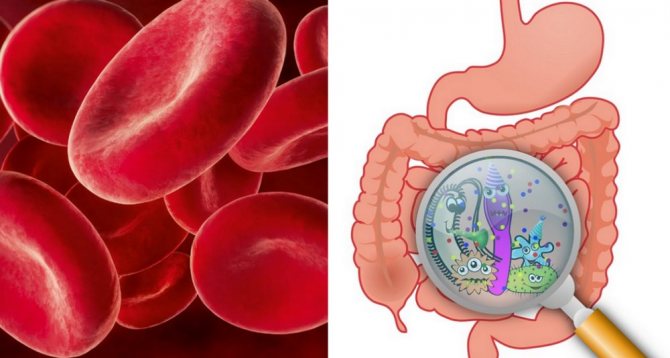
The view is also effective as an aid for the prevention and elimination of the consequences of oncological formations. Its active components make it possible to activate the natural regenerative properties, as well as to normalize the work of the affected organ and related systems. However, the white boletus has some contraindications.
Important! Mushrooms are contraindicated in children under 3 years old, even an edible boletus can burden the work of an unformed gastrointestinal tract, and also cause poisoning. First of all, all kinds of dishes based on it and extracts are prohibited in case of any allergic reactions to mushrooms.
It is not recommended to use it in excessive quantities for any disease of the gastrointestinal tract, as well as for pregnant and elderly women.It can lead to all sorts of digestive disorders, as well as become the cause of the activation of chronic ailments.
First of all, all kinds of dishes based on it and extracts are prohibited in case of any allergic reactions to mushrooms. It is not recommended to use it in excessive quantities for any disease of the gastrointestinal tract, as well as for pregnant and elderly women. It can lead to all sorts of digestive disorders, as well as become the cause of the activation of chronic ailments.
Boletus false - description and photo. How to distinguish a boletus?
Boletus mushroom is not only one of the most beautiful mushrooms, but also the safest. Almost without exception, aspen mushrooms are edible, and knowing the mushrooms by sight, they can be collected safely without fear of poisoning. Although cases of poisoning with raw and boiled boletus have been reported in North America, there is currently no exact information which of the boletus species growing in America are poisonous.
And yet, mushroom pickers have questions about whether there is a false boletus, what it looks like and how to distinguish an edible boletus from a false one. In fact, false boletuses do not exist. The only thing is that the boletus can be confused with the gall mushroom (bitter mushroom), which, in principle, does not look like a real redhead.
The gall mushroom has a bitter taste, turns pink or turns brown on the cut and has a brown mesh on the stem. The boletus has a pleasant taste, black scales on the stem and turns blue on the cut.
Below is a photo of an inedible gall fungus. Read more on how to spot a gall fungus in this article.
Gall mushroom
False doubles
No false species of boletus are known to science, but many inexperienced mushroom pickers can confuse a delicious edible fruit with bitterness. It is very easy to distinguish it from white aspen - it is yellow. The surface of the cap and the leg itself have beige shades, while the white boletus may have grayish shades already at an old age. Boletus turns blue when cut, and bitterness becomes pink or reddish.
 Gorchak
Gorchak
What is the difference between a porcini mushroom and a boletus?
The porcini mushroom is easy to distinguish from the white boletus, because its hat will be light brown, and sometimes with a reddish tint. The flesh on the cut does not change color, unlike aspen, and the leg is slightly thicker. Boletus has a special mesh pattern on the leg, which makes it easy to distinguish.
In terms of taste, the boletus is somewhat inferior to boletus, and its pulp is a little harder. The porcini mushroom also has dense flesh, but it is juicy and fleshy, which cannot be said about the boletus.
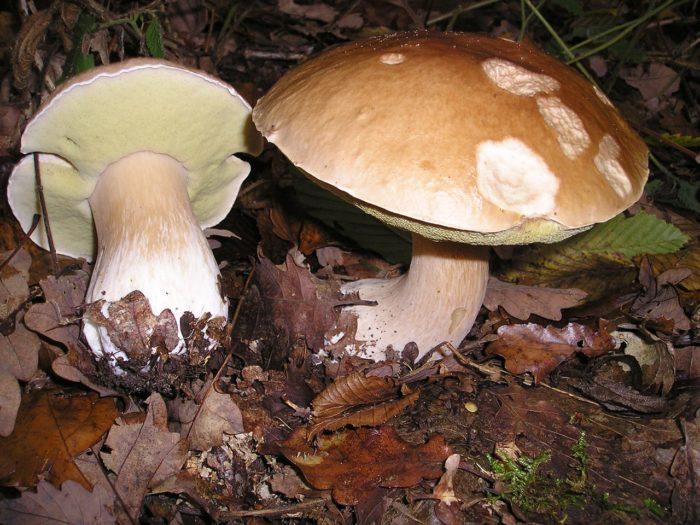 White mushroom
White mushroom
Aspen mushrooms - benefits and medicinal properties
Boletus boletuses are stewed and boiled, marinated and fried, frozen and dried - in any form, these gifts of the forest are good and tasty. So that the aspen mushrooms do not darken (do not turn black), they are soaked in a 0.5% citric acid solution before cooking. What are the benefits of boletus for the human body?
- As with most mushrooms, 90% of the boletus mass consists of water. Proteins make up about 4%, fiber - up to 2%, carbohydrates account for 1.5%, fat contains no more than 1%, and 1.5% of the composition of the mushroom is minerals.
- The calorie content of the boletus is only 22 kcal, so this mushroom can be considered as one of the components of the diet. Combined with a zero glycemic index, these red mushrooms are recommended for people with diabetes.
- Boletus protein contains a significant amount of amino acids essential for humans, which are absorbed by the body by 80%. By this useful property, mushroom proteins are similar to animals, therefore broth from young boletus boletuses is deservedly compared with meat broth.
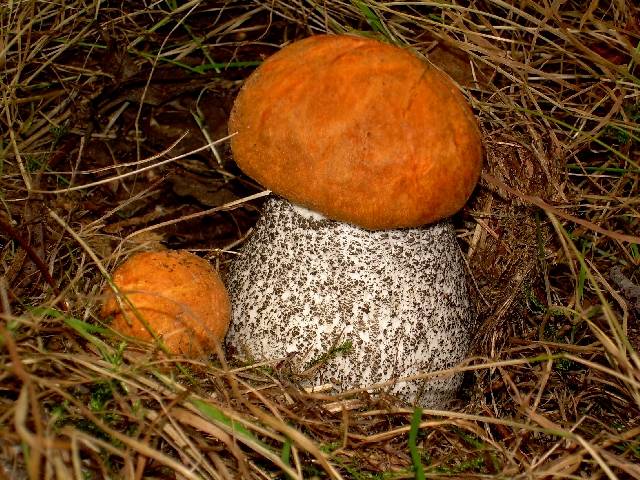
A significant amount of vitamins was found in redheads: in terms of the content of vitamin B, boletus mushrooms can be compared with cereals, and the amount of vitamin PP is the same as in the liver. Boletus also contains vitamins A and C.The predominant substance of the mineral composition of the redhead is potassium; to a lesser extent, the pulp of the mushroom contains magnesium, phosphorus, calcium, sodium and iron.
- Scientists have proven that regular consumption of boletus helps to eliminate toxins and toxins from the body.
- Boletus broth will help restore immunity after viral diseases, and also has a beneficial effect on blood composition in case of anemia.


